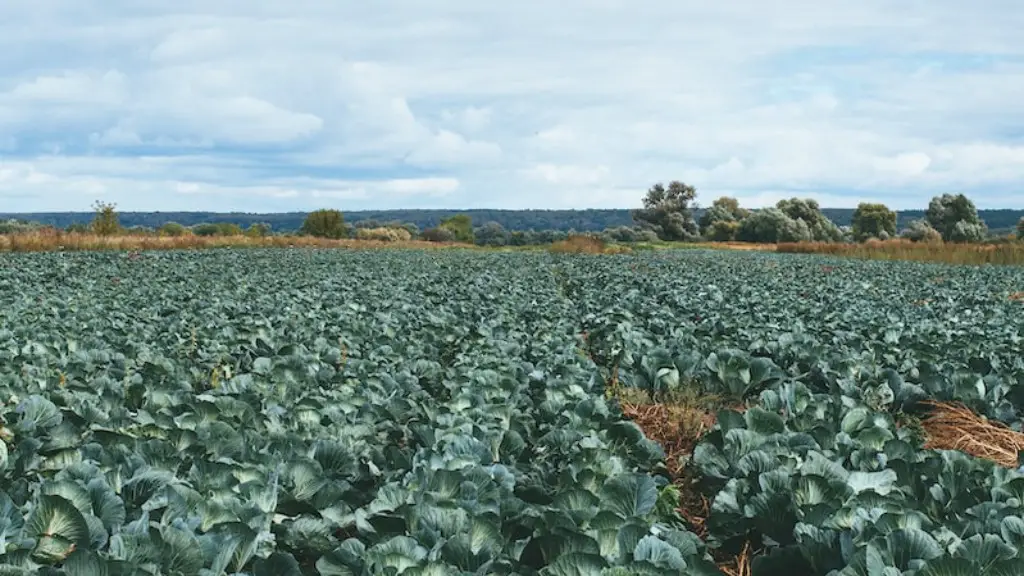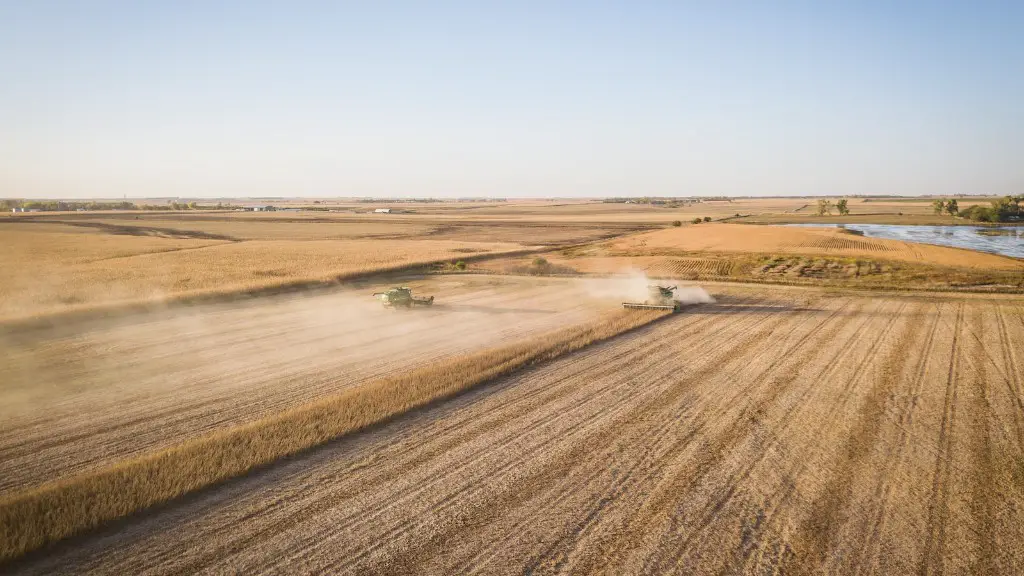Isotopes play a critical role in agriculture and farming operations. They are used to measure the environmental composition and interactions of different agricultural systems, monitor the production and movement of crops and soil, and identify nutrient needs for optimal yields. In fact, isotopes have proven invaluable in a variety of farming operations, ranging from pesticide and fertilizer management to groundwater management and soil conservation
Radioisotopes, for instance, have been used in agriculture to track the movement of water and nutrients within the soil. For example, the use of the radioisotope tritium can help track the uptake of water-soluble and mineral-soluble elements. Additionally, it can also be used to identify drought-stressed crops before they’re damaged, ensuring better production and minimal losses.
Stable isotopes, such as carbon and nitrogen, can help identify nutrient patterns in plants, soils, and groundwater. By applying stable isotope analysis techniques, researchers can track the movement of nutrients from one environmental reservoir to another, thus forming a deeper understanding of how plants take up vital resources.
Isotopic investigation can also be used to determine the efficacy of various fertilizers and whether crop yields can be correspondingly increased. Stable isotopes can give valuable insight into how fertilizer is used and how it affects soil fertility by replacing nutrients that were previously washed away. This allows farmers to make informed decisions about when and how much fertilizer to apply, helping them achieve maximum yield.
Moreover, isotope analysis can be used to identify any potential contamination in soils, water, and crops, potentially preventing the spread of disease if an outbreak occurs. Radioisotopes can be used to detect the presence of pathogens including fungi, bacteria, viruses, and parasites. This can help farmers protect their farms and crops from potential harvesters.
In summary, isotopes, both stable and radioactive, are critical tools in agricultural operations. Their use, both in the laboratory and in the field, can help farmers and researchers better understand the composition and behaviors of their soils, water and plants. As such, isotopes have proven to be invaluable in a multitude of areas, from tracking water and nutrients to testing for contamination and improving yield.
Tracing Nutrients
Stable isotopes are used to map water and nutrient patterns, allowing researchers to track how water and fertilizer are utilized in the ecosystem. Isotopic techniques are used to measure the seismic differences in the members of an isotope family, and patterns of such natural tracing systems can help explain the how and why of water and nutrient movement between various environmental compartments.
Isotopes are used for many other types of research and management related to agricultural practices. They can be used to test for fertilizer efficiency, and even to trace naturally occurring trace element availability in soils, water and plant tissue. Other important areas of research include monitoring the movement and degradation of organic matter, pesticide and herbicide movement, nutrient leaching, and even determining aquaculture species and extinction probabilities.
Tracing and evaluating these elements, through the use of stable isotopes, can help researchers build a comprehensive understanding of nutrient cycles and help farmers make informed decisions on management strategies.
Isotope tracers can be used to track the movement of minerals and chemicals in water by measuring stable isotope ratios, from one environmental compartment to another. Such data can be used to determine how efficiently fertilizer is being used, and how long it remains in the environment, allowing for better management strategies for soil fertility.
Stable isotope measurements can also provide useful information about how nutrients are moved between various environmental compartments, allowing for improved identification of natural pathways and different nutrient sources. This knowledge can help farmers develop better nutrient management strategies, helping them achieve maximum yield from their crops.
Nutrient Management
By monitoring the elements that are present in soil and plants, isotopic analysis can be used to improve the nutrient management of agricultural soils. This includes an understanding of their nutrient availability and losses, as well as the processes governing their movement within the ecosystem.
For example, monitoring the sulfur concentration in soil can provide useful information about how sulfur is being utilized by crops, allowing for better management practices for sulfur fertilization. This, in turn, can help farmers reduce their costs of fertilization and increase crop yields.
Carbon isotope analyses can also provide insights into how carbon cycles through the environment, informing crop selection, nutrient management, and pest control. Researchers have found that different carbon sources have varying signatures in plants, soils, and water, allowing for the tracking of specific organic sources.
Additionally, nitrogen isotope analysis can be used to better understand the flow of nitrogen through an agricultural system and its effects on the health of soils. This knowledge can help farmers identify areas of over-fertilization, ensuring that they apply the right amount of fertilizer and optimize their yields.
In conclusion, isotopes are used in a variety of ways to monitor environmental conditions in agricultural systems, from water and nutrient movement to pest control and soil fertility. They allow researchers and farmers to better understand how their soils, water, and crops interact and how to better manage their resources for maximum gains.
Pathogen Detection
Isotopes are also used in agriculture to detect the presence of pathogens that can cause disease in plants, animals, and people. Radioisotopes can be used to detect the presence of fungi, bacteria, viruses, and parasites, allowing for rapid and accurate detection and enabling farmers to take preventive measures more quickly.
Isotope-based technologies have also been developed to detect the presence and concentration of plant-disease-causing agents, such as viruses, bacteria, and fungi. This allows farmers to identify infected plants as soon as they appear, reducing the risk of crop losses.
Isotope-based technologies have also been developed to detect levels of pesticide and herbicide in the environment. Using isotopic tracers, the movement of these chemicals within and between different compartments, such as water and soil, can be tracked and monitored. This allows for improved management strategies for these chemicals, reducing their environmental impact and improving safety for crops.
In addition, isotope-based technologies can be used to identify differences in soil water retention capacity, which can be critical for assessing drought-resilience and soil fertility. Radioisotopes can be used to track the movement of water and nutrient availability, providing researchers and farmers alike with valuable insight into how plant and soil interactions work.
Finally, isotope measurements can be used for the rapid diagnosis of various diseases, allowing for the quick containment and healthy management of crops in a short period of time. This can have a significant impact on both pest and nutrient management, helping farmers reduce their losses and increase their yields.
Groundwater Management
Isotope-based technologies are also used to identify groundwater sources, which can be essential for irrigation and other agricultural operations. Radioisotopes are typically used to trace the movement and distribution of groundwater sources, helping to determine the origin and flow of different sources.
Using stable isotopes, the origin of water can be traced, allowing for better identification of areas of contamination, allowing for potentially preventative measures to be taken for the safe, responsible management of water resources.
Isotope-based measurements can also be used to determine the health of soils, helping farmers better understand the quality and fertility of their land. Stable isotopes can help identify areas of contamination and better manage irrigation practices for maximum soil fertility.
Finally, isotopes can be used to help identify areas of drought stress and make better informed decisions about when and how much water to apply. By using isotopic measurements to identify drought-stressed areas, farmers can ensure that their crops remain healthy and experience minimal losses.
Conclusion
In short, isotopes are essential tools in agricultural operations. From tracking water and nutrients to testing for contamination and improving yields, isotopes have proven invaluable in a multitude of areas. With the right combination of stable and radioactive isotopes, farmers and researchers alike can gain a comprehensive understanding of their environments, giving them the knowledge they need to develop sustainable management strategies.





